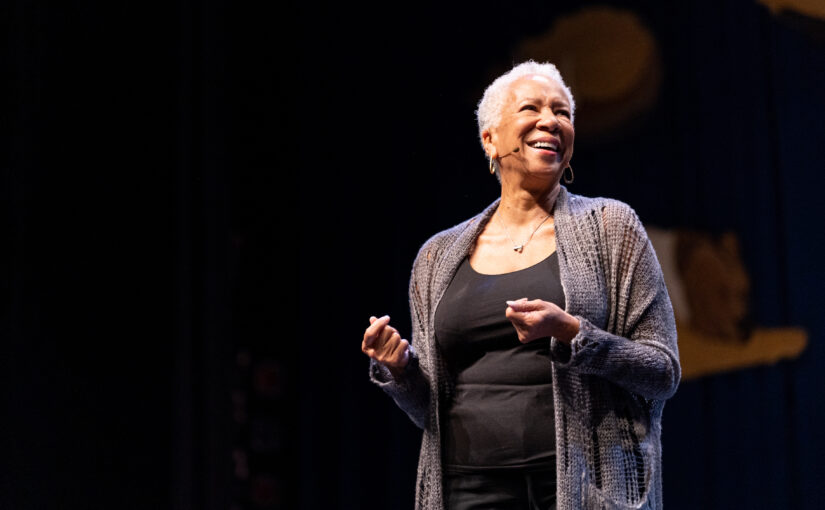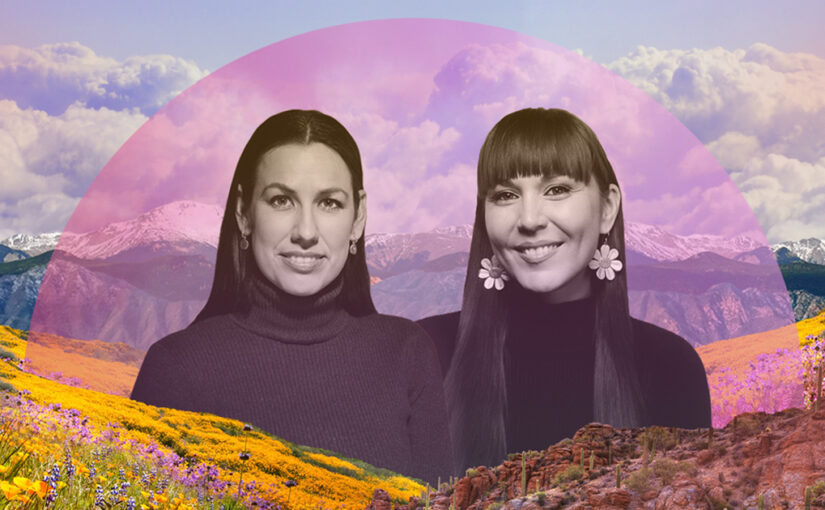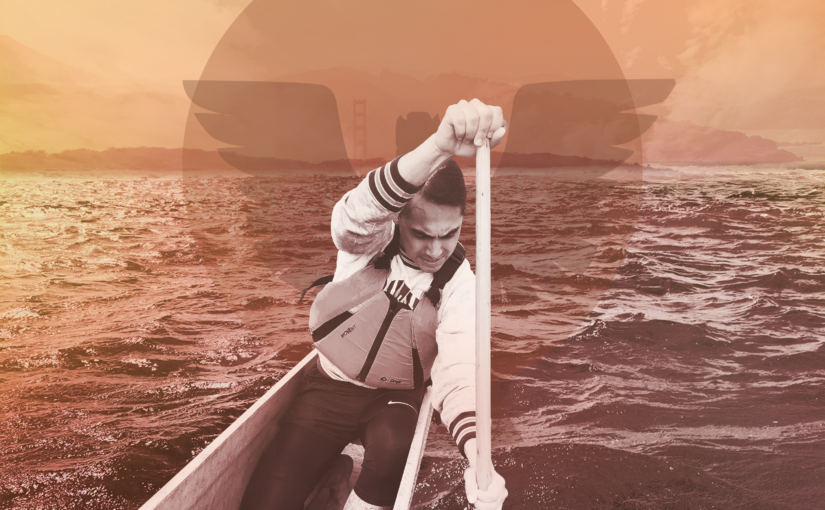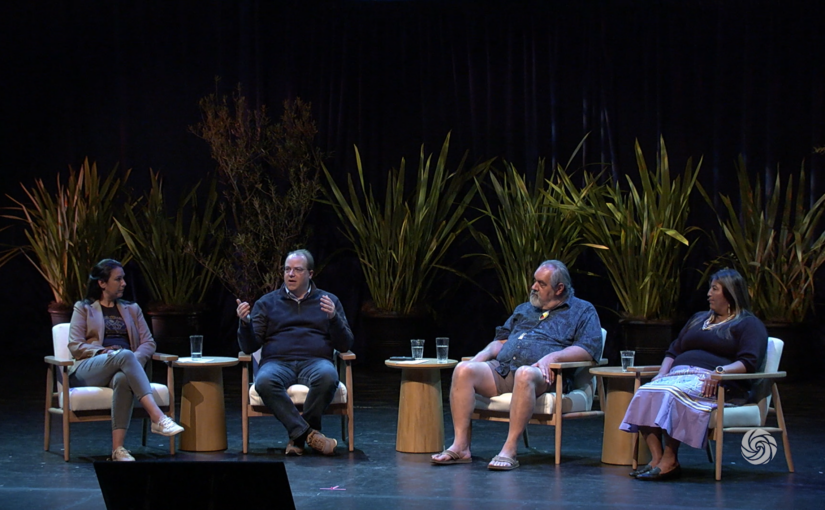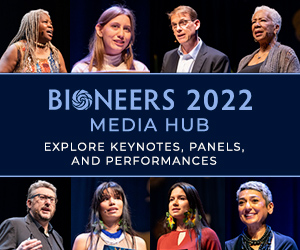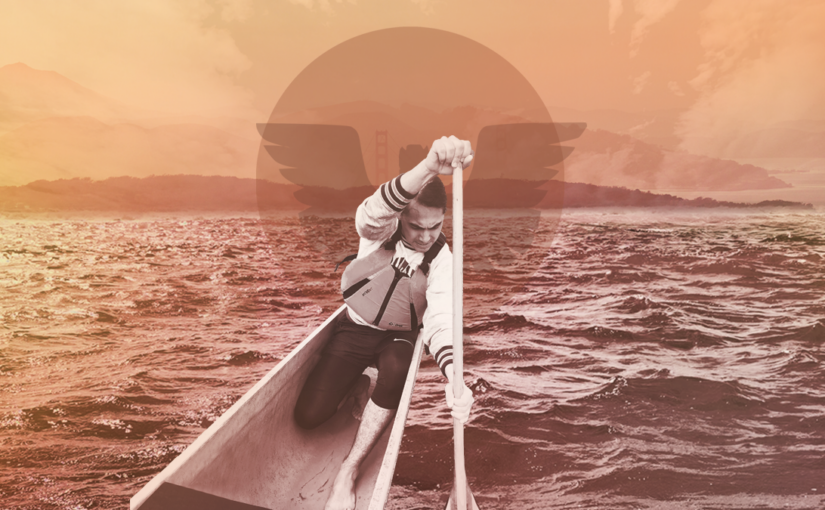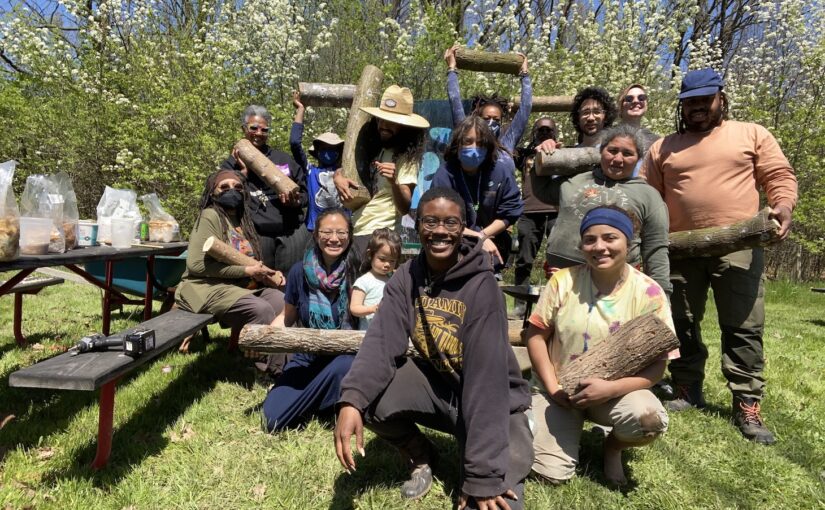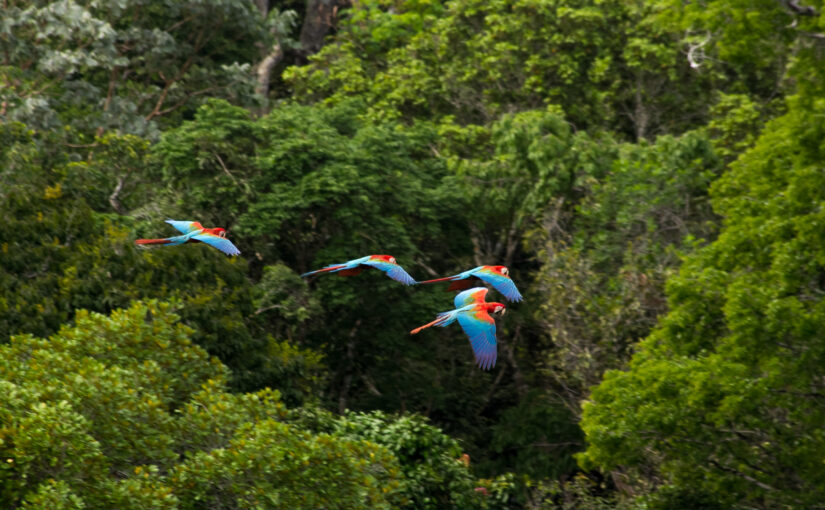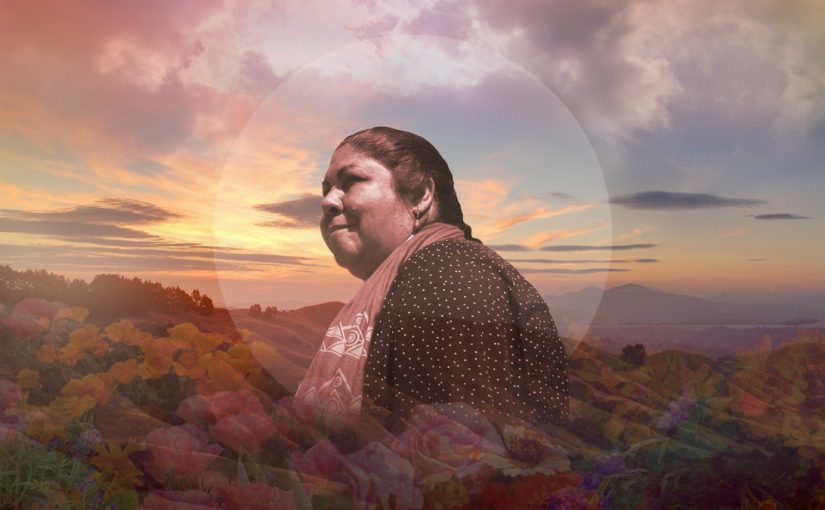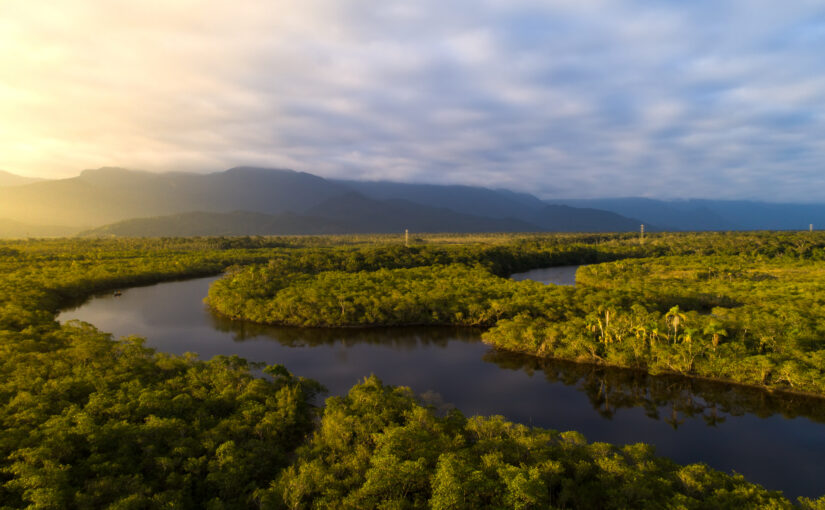In this time of radical upheaval and change, fulfilling the promise of a “more perfect union” in the United States means building a multi-racial democracy through transformative solidarity. As the Founder-in-Residence at Policy Link, Professor Angela Glover Blackwell has spent decades advancing racial and economic equity at the national and local levels. She says the fate of the wealthiest nation on Earth depends on what happens to the very people who’ve been left behind.
Featuring

Angela Glover Blackwell, one of the nation’s most prominent, award-winning social justice advocates, is “Founder-in-Residence” at PolicyLink, the organization she started in 1999 to advance racial and economic equity that has long been a leading force in improving access and opportunity in such areas as health, housing, transportation, and infrastructure. The host of the “Radical Imagination” podcast and a professor at the Goldman School of Public Policy at UC Berkeley, Angela, before PolicyLink, served as Senior Vice President at The Rockefeller Foundation and founded the Urban Strategies Council. She serves on numerous boards and advisory councils, including the inaugural Community Advisory Council of the Federal Reserve and California’s Task Force on Business and Jobs Recovery.
Credits
- Executive Producer: Kenny Ausubel
- Written by: Kenny Ausubel
- Senior Producer and Station Relations: Stephanie Welch
- Program Engineer and Music Supervisor: Emily Harris
- Producer: Teo Grossman
- Host and Consulting Producer: Neil Harvey
- Production Assistance: Anna Rubanova
This is an episode of the Bioneers: Revolution from the Heart of Nature series. Visit the radio and podcast homepage to find out how to hear the program on your local station and how to subscribe to the podcast
Subscribe to the Bioneers: Revolution from The Heart of Nature podcast
Transcript
Neil Harvey, Host: In this episode, Professor and policy advocate Angela Glover Blackwell shows how equity is good for everyone. In this time of radical upheaval and change, fulfilling the promise of a “more perfect union” in the United States means building a multi-racial democracy through transformative solidarity. The fate of the wealthiest nation on Earth is dependent on what happens to the very people who’ve been left behind.
I’m Neil Harvey. This is “Toward a More Perfect Union: Unleashing the Promise in Us All”.
Angela Glover Blackwell: I want to talk about how lucky we are to be alive, to be adults, to be in tuned, to be functioning right now, because this is the most amazing moment I have seen, that everything is on the table and causing us to have to think hard about things that we often pay very little attention to.
Host: When professor and equity policy advocate Angela Glover Blackwell says everything is on the table, the context is that the tables are turning.
When engineers prototype a machine, they run it at high speed and high stress to see what blows out – to find the flaws. These days, as Bob Dylan put it, “everything is broken.” What feels like a permanent five-alarm emergency is a civilizational stress test.
Our institutions are woefully not designed to manage the scale, scope and complexity of the wicked problems that bedevil us. In most cases, they’re actually causing the crises.
We’re living through an epic time of radical transformation – of breakdown and breakthrough. It opens up the space for authentic metamorphosis. To paraphrase Carl Jung, there’s a “changing of the gods,” a reset of the basic values, principles, symbols and structures of civilization. Everything is on the table.
Angela Glover Blackwell believes that for the United States to fulfill its original democratic promise, it requires unleashing the promise in us all to create a more perfect union. She says there’s actually a whole lot of popular agreement on the issues that really matter, and the stress test is causing us to question everything, which is where this story starts.
She spoke at a Bioneers conference…
Angela Glover Blackwell: We have had to think hard about democracy, something that we just thought was there. We didn’t think that it could be given up, didn’t think that it could be seriously threatened, didn’t know how fragile it actually was, but we’re having to face that.
We’ve had to reflect on institutions that have always been around and we thought they always would be around. We thought that they function the way that they function because they had to. We didn’t realize how much of the functioning of our institutions was because of custom, because of respect, because of habit. We had no idea.
We’ve had to think about all of these things, and we’re at a moment where history will look back, the future will look back, our ancestors will look back and they’ll say either that’s when they absolutely started on the road to getting it right, or that was the beginning of it all being lost. You are living through that moment, and we are not without agency. We are not without agency.
Host: As the Founder-in-Residence at Policy Link, Angela Glover Blackwell has spent decades advancing racial and economic equity at the national and local levels. That work has been a leading force in “lifting up what works” in sectors such as housing, transportation, infrastructure and public health.
When the Covid pandemic began convulsing society in early 2019, she saw how dramatically it laid bare what so many equity advocates had been highlighting for so very long: Public health was dangerously vulnerable because we were not investing in the health of us all.
Angela Glover Blackwell: It laid bare that what people had been saying about the baked-in nature of racism had just permeated throughout every institution, whether they were work institutions or educational institutions, or safety institutions. Whatever they might be, racism had been deeply embedded.
George Floyd’s murder caused us to have to face that. And part of the reason we faced it is because we all saw it. It was the first time in decades that we had had a moment like when the sit-ins were happening and everybody saw the SNCC and other young people being brutalized by the police, by dogs, by hoses, because we only had three channels. The same thing was on all the channels. Because we were all home and we were glued to our TV, we saw the murder of George Floyd over and over and over again. And whatever prejudice or bias or ignorance, we were taken into viewing it. It was clear what we were seeing, and there was no getting away from it.
It also was the time in which we saw that, for many people, racial superiority is more important than democracy, and that was a tough one. That was a tough one. But when we saw what happened on January 6th, there was no question that people were willing to sacrifice belief in a political voting system that really came to the conclusion that a multi-racial majority was putting someone into the White House. That was illegitimate in and of itself.
So here we are with all of these things causing us to think, to study, to talk to our friends and neighbors and strangers about things that we never talked about before. And what we can do if we get it right is absolutely extraordinary, because we really cannot create a thriving multi-racial democracy if we don’t understand it, if we don’t know its history. We really cannot create a thriving multi-racial democracy if we don’t see the extraordinary asset that our difference is. It is so essential that we lay out a marker for where it is that we want to get to, and we develop a plan for how we’re going to get there.

Host: As the United States approaches its 250th anniversary since the July 4th 1776 Declaration of Independence, the nation faces a stark reckoning. Angela Glover Blackwell believes that fulfilling that founding promise of equal rights for everyone was aspirational. Now is the moment of truth to deliver on it.
Angela Glover Blackwell: I think it’s going to really require us to be able to take our beautiful and exciting multi-racial coalition and realize that starting in this country, that that coalition is the natural heir of the framers of the nation when they sat down to form a more perfect union, to be able to do something that actually it’s taken me a little time to come to, and let me confess that.
Because I will tell you as a black person growing up in this country, and I grew up in St. Louis, Missouri, I was not feeling it. I was not. I was not feeling it. Like what is the big deal about these founders? And then as I learned more about them and started reading their biographies, and hearing history that’s told in more honest ways, but I will tell you is I have studied democracy, and as I have studied those founding documents, it is clear to me that the framers punched way above their moral weight. They punched way above their moral weight. And once you realize that, you can accept extraordinary ideas, even if they come from people who were deeply flawed.
And so as I think about the… the opportunity that we have now, it is just so clear that what we’re going to have to do is own that we are the heirs to something that’s very special, and the work is really hard, because now we really can create a democracy that works for all.
Host: Like the concurrent French Revolution, the American Revolution resounded around the world with its vision of equal rights and democracy. It captured the world’s imagination of the possible.
Yet as powerful and catalytic as that narrative has been, the real history is way more complicated. Its burdens continue to haunt the nation, but Glover Blackwell says we must unearth it, learn from it and reconcile it.
Angela Glover Blackwell: The United States of America is a nation that was founded on genocide for the purpose of stealing land, and human bondage for the purpose of slave labor. This theft of land and theft of labor is the basis upon which the country was built, and in order to be able to justify that, there was developed a hierarchy of human value, and that hierarchy of human value, not just justified, but it then got baked into every institution, that when you think about how it functioned, one of the things that is just starkly true when you think about it is that the dehumanizing relationship that formed the black/white paradigm during slavery, that dehumanized the slave and dehumanized the owner, created a paradigm that actually defined the way that oppression and repression would take place.
And that black/white paradigm was defining, it was embedded, it is continuing, it is also inadequate to be able to fully understand the status of everybody who is oppressed. But everybody who was oppressed is oppressed within the context of that paradigm. So we have to go back and study that history and understand that history. We can’t go forward without it. It’s essential. I know it is uncomfortable. I know it is hard to talk about race. I know that just by lifting up the black/white paradigm it raises a million questions: What about what happened with Indigenous People and continues to happen? What about what happens to people who are Latinx and Asian? What about what happens to people with disabilities, who are transgender, people who are white and poor, all of the people who you can think of oppressed? How can I ignore that and lift up the black/white paradigm? Because the protocols of oppression were developed in that unnatural relationship, and we’ve got to face it. We’ve got to understand it. We have to analyze it. We have to see how it goes forward.
But the next thing we have to do is that we have to understand that addressing these wrongs, while it is the right thing to do, it is the moral thing to do, it is the only way to be able to go forward; that if we don’t develop a way to be able to tap into the assets that are the people who make up the country, who make up the world, the country and the world will not flourish. They will not survive. They will not tap the resources that are needed.
The fate of the nation is dependent on the very people who have been left behind.
Host: Angela Glover Blackwell points to the seismic demographics. Since 2012, the majority of all babies born are of color. By 2030, the majority of young workers will be of color. By 2044, the US population will be majority people of color.
The tables are turning, but will they turn toward a more perfect union that unleashes the promise in us all?
More when we return. I’m Neil Harvey. You’re listening to The Bioneers…
You can visit bioneers.org to subscribe to our newsletters and podcasts, check out Deep Dives on the topics that matter to you most, and learn about our conferences. That’s bioneers.org
Although the media and political narrative is that the US is hopelessly polarized and divided, a majority of polls consistently show that a vast majority of Americans strongly support the same goals: Universal healthcare, access to free education, a living wage, paid family leave, climate action, environmental protection and other policies and programs that invest in people, communities and the public good.
Yet next to nothing gets done. Why? Greedlock. As the musician Wynton Marsalis puts it, when it comes to holding the people in power accountable, “Keep your eyes on the cash register, not the people staging the fight in the store.” Again, Angela Glover Blackwell.
Angela Glover Blackwell: Economic greed is just having a heyday while the media is focusing people on all of their divisions, and the more they focus on them, the more people buy into them and figure like they have to take sides and where are they on it. And all the time, greed is just taking advantage of the fact that we are not asking our government and our regulatory systems to be able to make sure that our economy is working in a way that is fair. So, a really interesting way to think about what’s going on, and it’s really disturbing when you think of the role that the media has played in distracting the American people from the real issues.
It reminds me of a story that my friend Saru Jayaraman told me with One Fair Wage that they were having a demonstration in Washington, D.C. in front of the capitol, trying to really promote the Fight for 15, increasing the minimum wage. And across the street, there was a Trump demonstration in favor of Trump and talking about “making American great again”. And a couple of people from the MAGA demonstration came over to ask the people for One Fair Wage what it was that they were there for, and they said we’re trying to make sure that low-income workers can make more money, and they said, Oh, we want that. And the MAGA people picked up a couple of the posters and marched with them. Classic example of when you stop distracting people around these, what they call cultural issues, and talk about the bread and butter issues, the American people are not that far apart, no matter what their political persuasion.

Host: One catastrophically successful part of the political narrative since the 1960s has been the relentless, reactionary drumbeat that government itself is the problem, and we need less of it.
In reality, the economic elites pounding that drum are just fine with big government – as long as its policies serve them: tax cuts for the wealthy, business deregulation, the privatization of just about everything, and cutting or terminating Social Security and Medicare.
In fact, there have been two times in modern history where bold government intervention radically improved the rights and livelihoods of Americans: Roosevelt’s New Deal and Lyndon Johnson’s Great Society and War on Poverty.
Angela Glover Blackwell reminds us that those smart, strategic government policies can be life-changing for the vast majority of the population. And what’s good for the most vulnerable and marginalized turns out to be good for just about everyone.
Angela Glover Blackwell: In 1950, 56% of black people in America lived below the official poverty level. I’m not saying were low income, lived below the poverty level. By 1980, 30% did. And it was because of programs. It was because of Head Start, it was because of increased minimum wage, it was because of investment in cities, it was because of the youth education program. All these programs that came into place, it was because of Medicaid. I mean, it was Medicare. All of these programs that came during the Great Society cut poverty vastly, not just for people who were black, for the elderly. Elder poverty was a huge problem. But, you know, we had Social Security, but it took Medicaid to really be able to make the progress that needed to be made around healthcare. Those programs made a difference and it was, I think, Ronald Reagan who said we fought a war on poverty and poverty won. Not true. Not true. We fought a war on poverty, we were making progress, and then we gave in. And we stopped.
The Vietnam War had a lot to do with it, but changing the administration to Nixon and these are the things that actually killed it because greed, again, got control of government. And when greed gets control of government, the first thing it does is convince the people that government is not your friend, we need to cut back government, we need to give that money to rich people. And that’s exactly what you do.
When you do a tax cut, you take the money from poor people, you give it to rich people. And somehow these politicians can talk the American people, at least some of them, into believing that that’s a good thing. We have so much suffering and inequality not because we don’t know what to do, we just don’t have the political will to do it.
Host: Once again, keep your eye on the cash register, not the fake fight being staged on aisle one.
When Covid paralyzed the US economy, the Covid relief package not only helped out working people with life-saving checks. In just one year, the child tax credit cut child poverty in half. Despite overwhelming public support to continue the policy, the political class refused to spend the money. Call it the democracy deficit.
But, says Angela Glover Blackwell, there’s a deeper question: the foundational distinction between equity and equality.
Angela Glover Blackwell: I first became familiar with the terms when I was the senior vice president of the Rockefeller Foundation, and they used equity in talking about their international development work, and equality in talking about their domestic civil rights work. And so I pulled people together and said, well, why are we using different language and what does it mean? And from the series of discussions we had, it became clear to me that equality was an input conversation that was really trying to focus on making sure that we were providing the same things for people without regard to race, or religion or gender. But that equity was an outcomes discussion.
So when I started PolicyLink, I said I think we need to focus on equity, that we need to really 1) create a big tent that lets everybody who’s working for justice, whether they’re doing litigation or community development or education or healthcare, to understand that they’re part of the same thing – equity. And we needed to have a conversation that moved away from inputs, because clearly equality is an interesting and worthy goal. We’ve never done it, but just doing equality now after decades upon decade of inequality will not get us where we want. And that’s most obvious in the education arena.
Equality in education means making sure that teachers have the same amount of training, that the kids are using similar textbooks, that they’re going to school the same amount of time. Equity says: we want to make sure all children achieve at high levels, graduate and go on and reach their full potential. And once you set that out as your goal, the inputs are bound to be different, because some children in communities where their parents have resources, where the communities are well-resourced, really all you need is a school that’s providing good education. But if you have children who are in communities where there are no recreational activities, where it is not safe to play on the streets, where parents are not coming home until very late, many parents have not had the education themselves to be able to read and do other things, that that is a different requirement that we need to have supplemental education, we need to have things in the community, teachers might need to be trained in a different way.
And so equity asks: What do you want? And backs into what it’s going to take in order to get there. Equality focuses on making sure that the inputs are the same.

Host: As the author and policy expert Heather McGhee has said, “When we underinvest because of prejudice, everybody suffers. We need a ‘we’ to survive.”
As the United States comes full circle to its aspirational founding ideals, will the “we” in “We, the people” become decisively more inclusive? Will our ancestors look back on this moment as the beginning of it all being lost, or the beginning of moving toward authentic transformation?
Angela Glover Blackwell: Equity creates more, not less. It’s just like you all have talked so much about love. Love creates more. The more you love, the more you have; the more you give, the more you get; the more you spread it, the more it exists. Equity is like that. It’s not a zero sum game. You invest in the people who are going to be the future, and the economy does better, the democracy works better, our neighborhoods are better, we’re safer in the places that we live.
We need a solidarity that actually builds on what I have been just saying, that our future collectively is dependent on all of us being able to reach our full potential. That is the definition of equity – just and fair inclusion into a society in which all can participate, thrive, and reach their full potential.
What we really have to understand is that this kind of solidarity, which I call transformative solidarity, doesn’t have you thinking that I’m going to be your ally, but it’s asking you to be mine. It’s not that I’m going to help you, you’re going to help me, we’re going to do it together, because my survival is dependent on it.
The problem with racism is not a problem for black people, it is a problem for the world, it is a problem for the nation. And so when we develop the story that is based on our history, when we make a commitment to achieving a world in which all can reach their full potential, equity, we understand that we do that because it is the right thing to do, but it is the only thing to do to be able to go forward.
And the process of doing it is one in which we join with others. We embrace their realities. We understand that our difference is our strength, it is our very best asset that we have, that by embracing it we then are in a different kind of coalition, not one that just is for the close in, but one is for the way out.
This is our moment. Everything is on the table, and it’s up to us to take advantage of it, to join together and to move forward, because we cannot unlock the promise of the nation, we cannot unlock the promise of our highest ideals until we unleash the promise in us all. Thank you. Thank you.

